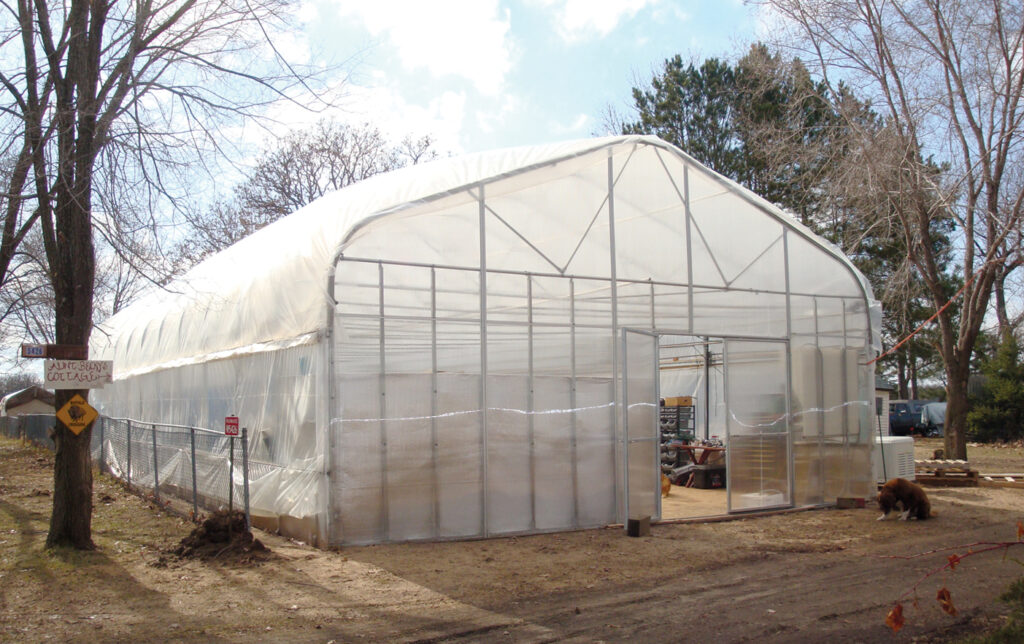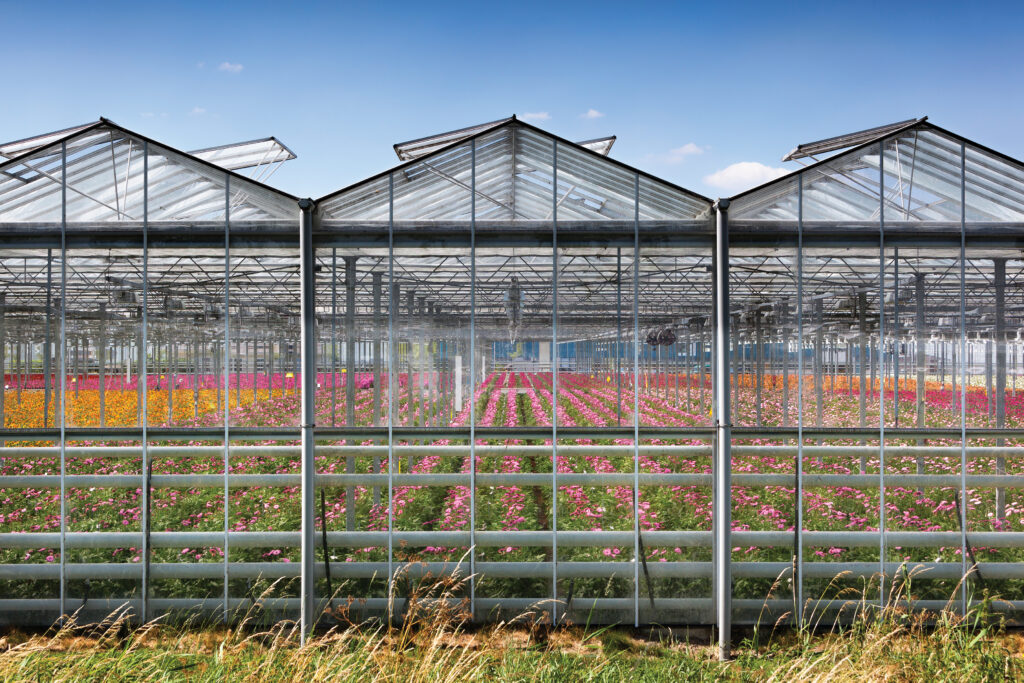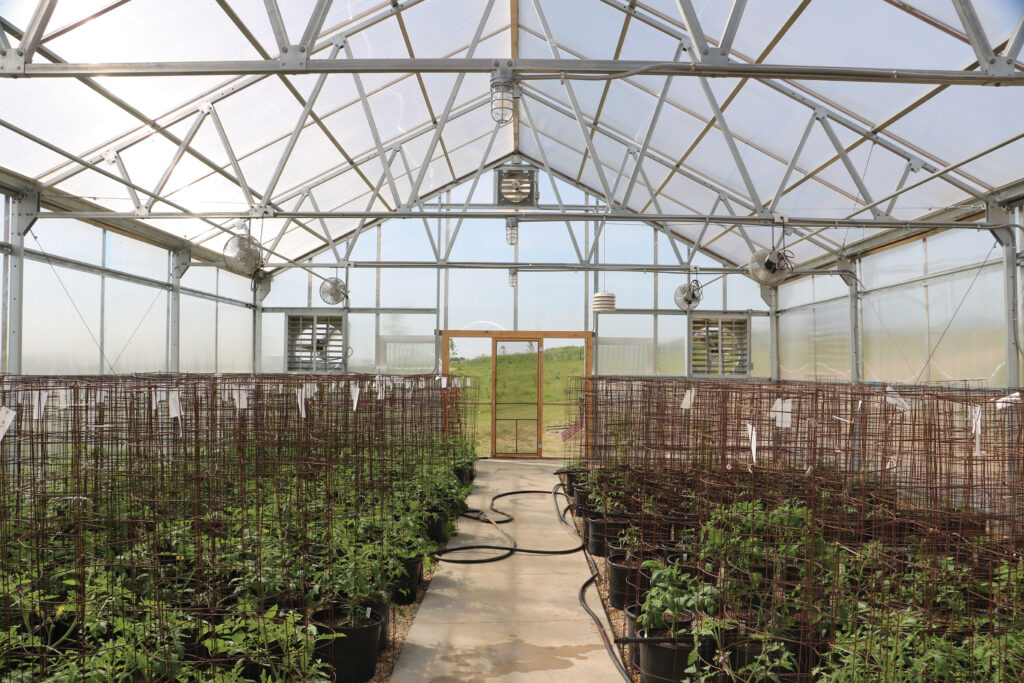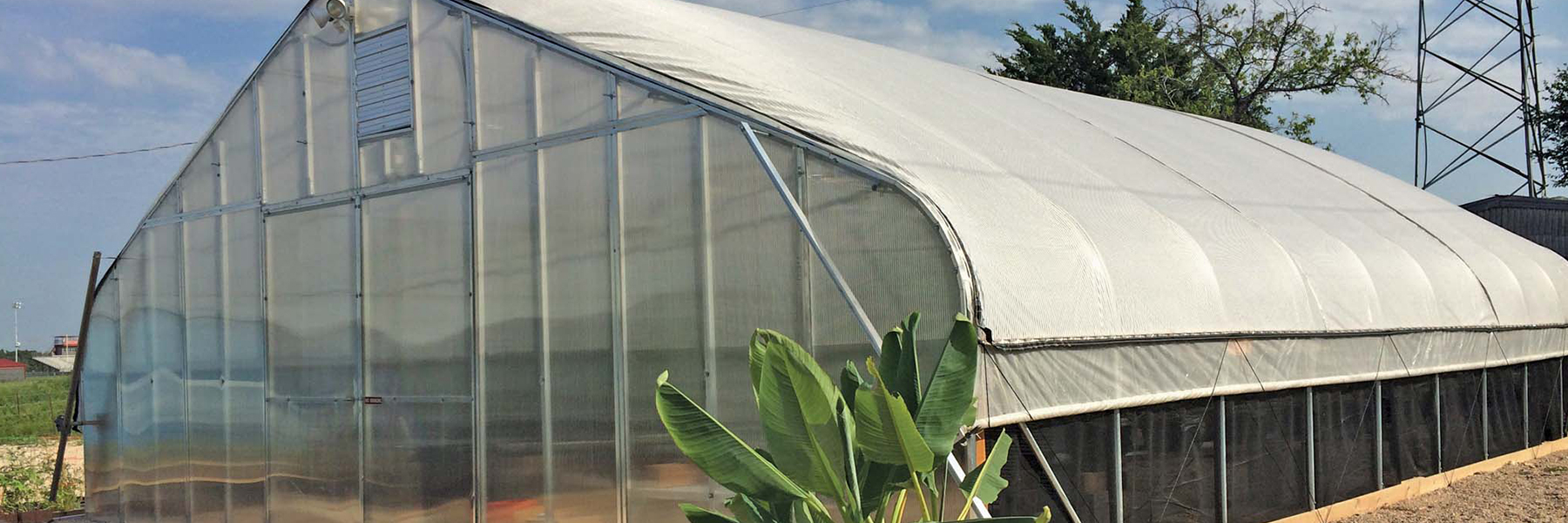Choosing the Right Greenhouse Covering for Your Operation
April 26, 2018
Selecting the appropriate material for a greenhouse covering requires careful consideration of the insulation, light transmission, cost-efficiency and durability a grower desires. Greenhouse cladding comes in a variety of materials, including poly film, glass, polycarbonate and more.
When a grower searches for their ideal covering material, they should bear in mind the types of crops they will grow, the climate they live in and the placement of their greenhouse. Poly film, double poly film, glass and twin wall polycarbonate are great options that will suit most growers.
Let’s take a closer look at the light transmission, R-value (heat insulating factor) and price point of these cladding options.
Greenhouse Film
Greenhouse poly film, a flexible material that comes in a range of thicknesses, is popular with many growers because of its low cost, tensile strength and durability. Many of Growers Supply’s poly film options are UV-protected, ensuring they will endure years of sun exposure without yellowing or weakening.
The film’s high translucency ensures good light diffusion and reduces shadows. It offers a light transmission level of around 90 percent, giving plants access to ample amounts of sunlight. This plastic film is also easy to install, even for those with only modest building skills.

What the film gains in light transmission, it sacrifices a little in insulation. Its R value of .83 means that it may not be warm enough for year-round usage, depending on the region. Poly film is a good choice for cold frames, high tunnels and hoop houses, and appeals to many growers because it is easy on the pocket as well.
Sign Up now for more information
GrowSpan provides poly film in a range of mils (a mil is 1 thousandth of an inch.)
- 6 Mil 4 year film: The most popular greenhouse cladding offered by Growers Supply. When fastened securely, this polyethylene film can really last up to 8 years.
- 6 Mil 4 year Infrared/Anti-Condensate film: This film provides infrared additives to help retain heat and block some types of UV light from entering the greenhouse. This can be helpful to plants sensitive to high levels of radiation. The anti-condensate properties encourage water to sheet down the side of the film, minimizing condensation and dripping. It also functions perfectly as an inside layer of double-layer greenhouse film.
- 3 Mil 1 year film: This is a good single layer solution for temporary projects.
- 3 Mil 1 year white film:This type of film is mainly used for overwintering or protecting plants from the cold. It’s a great short term solution for growers who need one season of winter coverage, as opposed to year-long growing.
- 6 Mil Sun Master clear greenhouse film:This poly film offers over 90% light transmittance and is considered the standard in greenhouse cladding.
Double Poly Film
The light transmission of double poly film is close to 90 percent, providing ample but slightly softened sunlight. This soft, natural light is not just easy on the eyes, it also helps prevent the burning of plants.
With double poly film, growers are able to inflate the space between the two layers with just a small fan. This creates a beneficial air pocket that improves the R value. Because of this, growers can expect an R value of about 1.5.
Since double layer poly cladding is two layers, it is slightly more expensive. However, it is still an economical option, especially when growers factor in the improved insulation properties.
GLASS CLADDING
Compared to plastic coverings, glass cladding is sought after for its appearance and high level of light transmission, as well as its durability, if growers choose tempered glass. For growers that want a greenhouse with exceptional aesthetic value and high light transmission, glass is the best covering.

The ability to harness sunlight is one of the primary benefits of greenhouse production. With glass cladding, growers can take full advantage of the natural environment and achieve light transmission of around 90 percent.
Glass is also more reliable than a standard film covering. If growers acquire tempered glass, they give their structure added durability that lets it stand up to even the most severe weather, like a heavy wind or snow load. Tempered glass is shatter-resistant, which helps mitigate the common concern of glass breaking and impacting an operation.
Glass does possess a slightly higher R-value than standard poly film, providing greenhouses with a rating of 1.00 in 4 mm thickness. To increase this cladding’s heat retention, growers can layer their glass panels and create double pane, or even triple pane glass.
Triple pane glass cladding can provide an R-value of over 3.00, offering one of the best thermal efficiency ratings available for a greenhouse covering. Glass does come at the highest price-point out of these cladding options, but if growers prioritize light transmission, appearance and longevity, then it can provide a suitable greenhouse covering in any operation.
8 mm Twin Wall Polycarbonate
Often regarded as the best greenhouse covering material, polycarbonate is another popular choice that’s used in a wide variety of climates. In particular, 8 mm twin wall polycarbonate provides practically shatter-proof protection from impact and weighs 1/12 as much as glass.
Due to its strength and lightness in weight, it is widely used for construction, rain shields and soundproofing applications. It’s become a very common substitute for glass, and for most growers, it’s a better option.
GrowSpan uses 8 mm twin wall polycarbonate panels on its own Series 2000 Commercial Greenhouse, which has earned the nickname “bomb proof”. The air pockets between polycarbonate sheets stand up well to extreme weather conditions, since they retain heat in cold temperatures and stay cool during warm months. The hollow, double-layer construction of 8 mm twin wall polycarbonate provides the highest insulation factor with a 1.72 R-Value.
The more layers a cladding sheet has, the less light is transmitted. Thus, growers must determine which is more important for their greenhouse – light transmission or insulation.

8 mm twin wall polycarbonate is an excellent facilitator in plant growth, blocking virtually all UV penetration and providing a light transmission level of about 80%. This cladding is more expensive than poly film, but cheaper than glass, and continues to be a valuable option for commercial and professional growers.
8 mm twin wall polycarbonate is designed to survive for many years of use without showing signs of yellowing, fading or discoloration. Its thermal efficiency helps growers establish an effective year-round growing environment. This stabilizes indoor temperatures, cuts down on utility costs and reduces an operation’s carbon footprint.
GrowSpan and Growers Supply have greenhouse cladding options for every grower, form the backyard hobbyist to expansive commercial operations. Whether a grower is replacing an existing greenhouse covering or building a new greenhouse from scratch, considering these cladding factors can make the difference between struggle and success.
Request A Quote

